This is Science: Putting triboelectricity at the service of humanity

Apparently, this is the principle group of Professor Wang ( Wang ), which successfully combines work at the Beijing Institute nanoenergetiki and nanosystems and Technological University of Georgia, elected its maxim. Over the past six months, a total of 7 works have been published only in the journal of the American chemical society ACSNano (impact factor 12.062), we will talk about them today. Moreover, these systems have real chances to become the main source of power for wearable sensors and smart clothes.
Instead of the foreword
At the beginning of this year, the work was published and its brief retelling on Habré on the generation of electricity through triboelectricity. It looked then, as some exotic, perhaps not having normal application in the national economy, although the authors of the article indicated that, based on the development, it is possible to create, for example, an autonomous weather station. Imagine my surprise when, as from a cornucopia, articles began to pour in a highly rated magazine, in which a lot of methods for using static electricity were proposed.
But let's start with the main thing - with a short excursion into physics and repeating the material of the previous article. So, many of us have encountered in everyday life such a thing as triboelectricity, that is, electricity (or more precisely, separation of charges) arising from the friction of two materials or substances (for example, with different densities). Moreover, such a separation of charges can be described by two main characteristics: in fact, the magnitude of the charge (or current) and the potential difference. Of course, these characteristics depend on many parameters: humidity, temperature, nature of the materials used and so on.
If you, dear Admirer of Habr, have a synthetic blanket at home, then in the dark, sorting this blanket, you can see sparks jumping between the body or individual parts of it, as well as smell the “thunderstorm” (ozone) and nitrogen oxides. Similar examples - experiments from the channel "Simple Science" Bredun :
Or one more thing:
Usually, in physics lessons at school, this effect is presented as something useless or even harmful (for example, for computer equipment, in aviation), however, this is not entirely true - let's turn to examples.
Hört ihr mich?
"Can you hear me?" - as it was sung in one song of the German group Rammstein. Yes, the authors of the work said with confidence that they suggested using a tribogenerator for a self-feeding microphone, acoustic determination of the position of the body, and even for acoustic scales.
The scheme of the developed device is presented below. It is worth noting that it is not much different from the usual microphone for us , with the only difference being that, instead of electromagnetic effects, such as changing the induction or capacitance of a capacitor, the measured characteristic is, like in the case of a tribogenerator , a current.
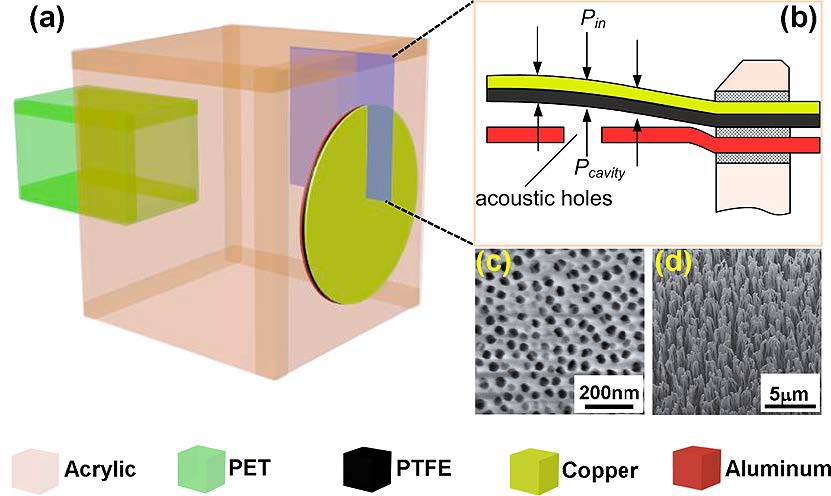
Device self-feeding microphone and acoustic wave detector ( PET - polyethylene terephthalate, PTFE - teflon)
Of course, acoustic characteristics were also determined. Naturally, the higher the volume (the closer the sound source to the microphone itself), the better this microphone works, but do not forget that the device does not require an external power source, the signal can potentially be amplified by the receiver.
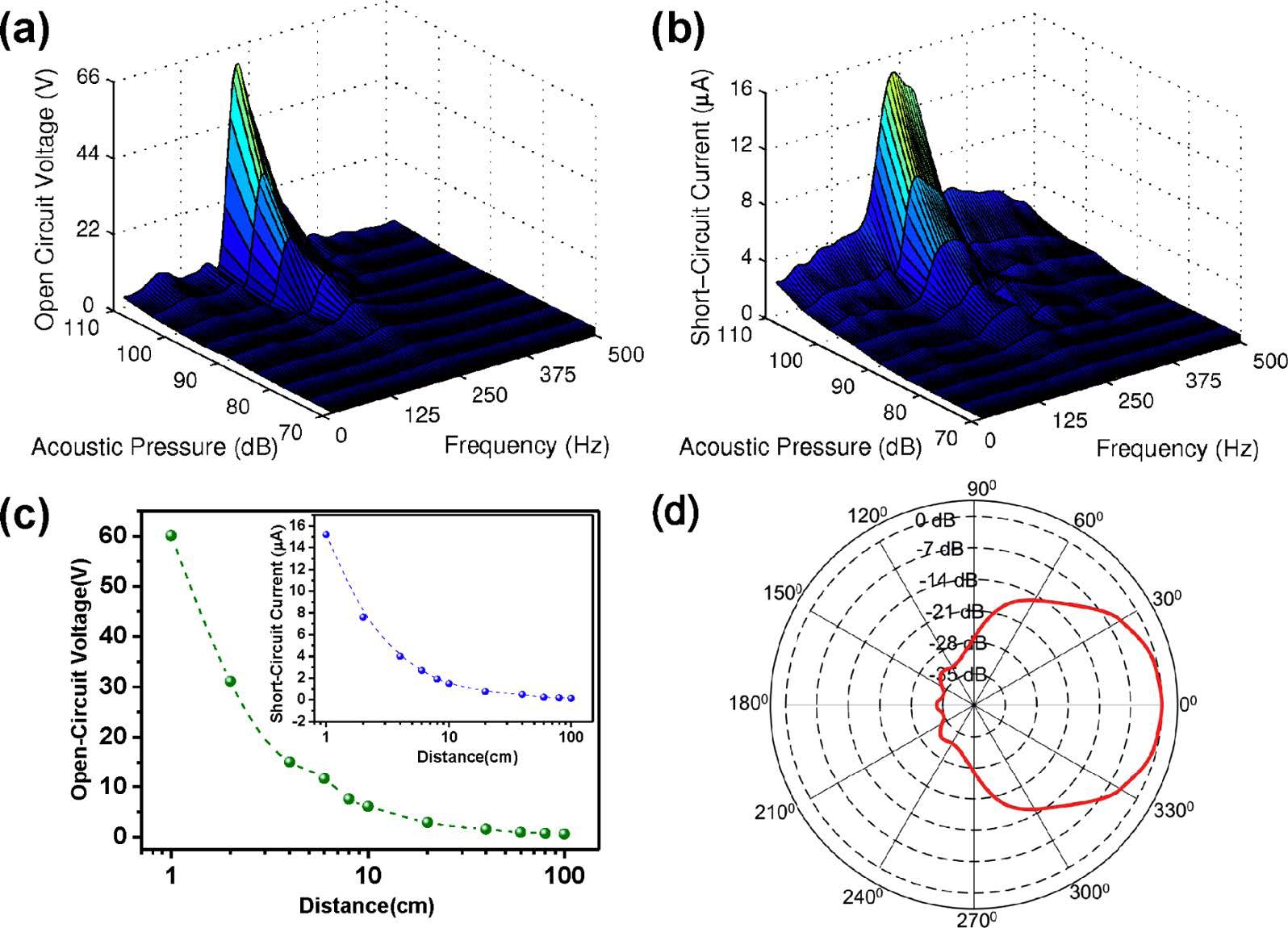
Electrical and acoustic characteristics of the resulting device: (a) open circuit voltage, (b) short circuit current, (c) the dependence of these characteristics on the distance to the active element, and (d) microphone radiation pattern.
If the microphone has such a radiation pattern, then it’s a sin on its basis, do not create a detector of the position of the sound source, moreover, self-feeding. Actually, which was done on the basis of signal correlations between several sources:
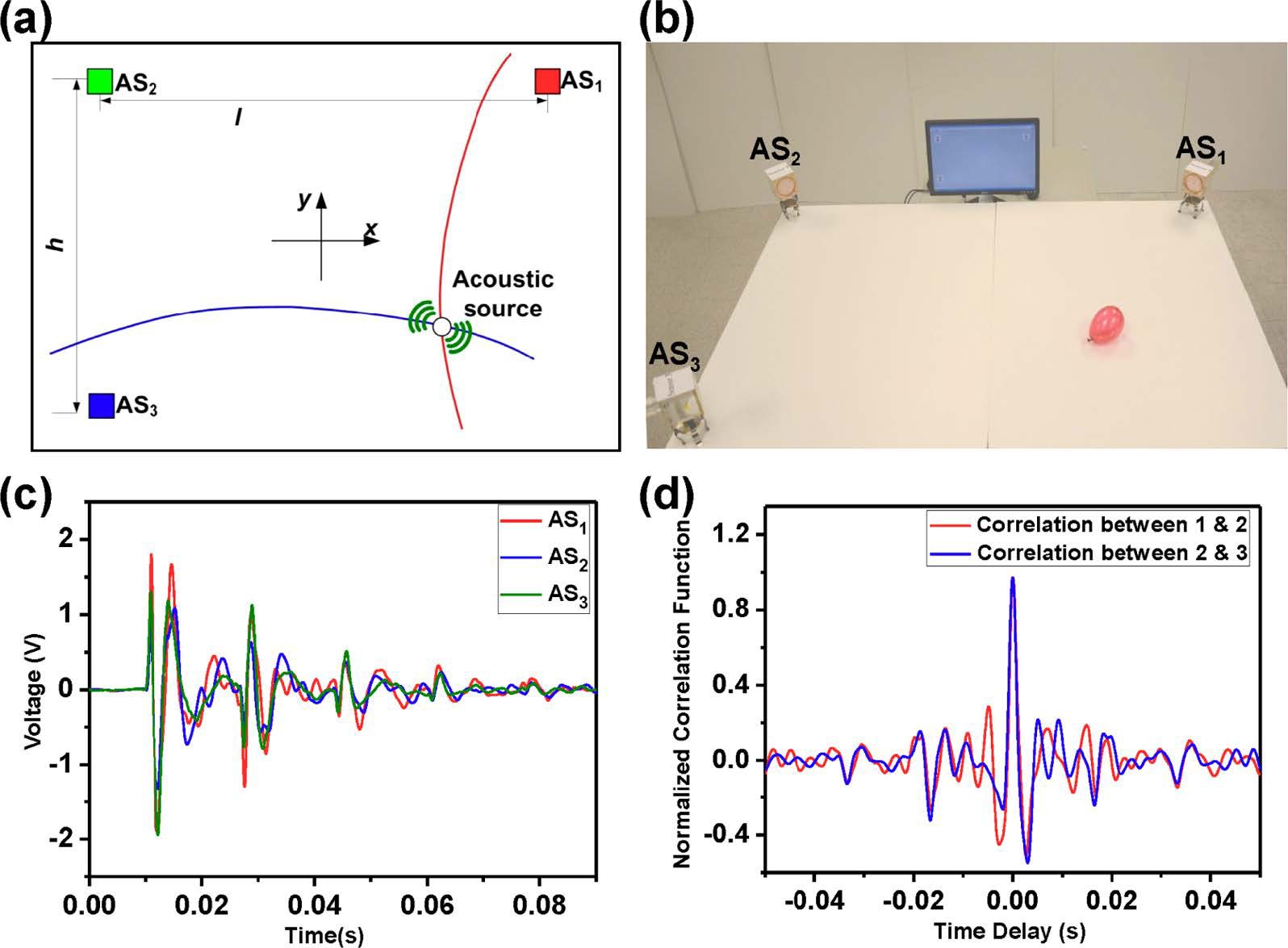
An example of using a device for detecting a sound source
And this is not all, also a similar membrane can be used to weigh objects using sound, as shown in this video . Scientists managed to achieve a sensitivity of 270 mV / mg, weighing masses from 40 mg to 400 mg. In principle, such scales can find their application in the jewelry industry due to the extremely low price and high sensitivity.
Video about the operation of the microphone and the sound position detector can be viewed on the official website or Yandex-Disk .
Original article at ACSNano (DOI: 10.1021 / nn4063616).
Here and there, back to you and me - electricity.
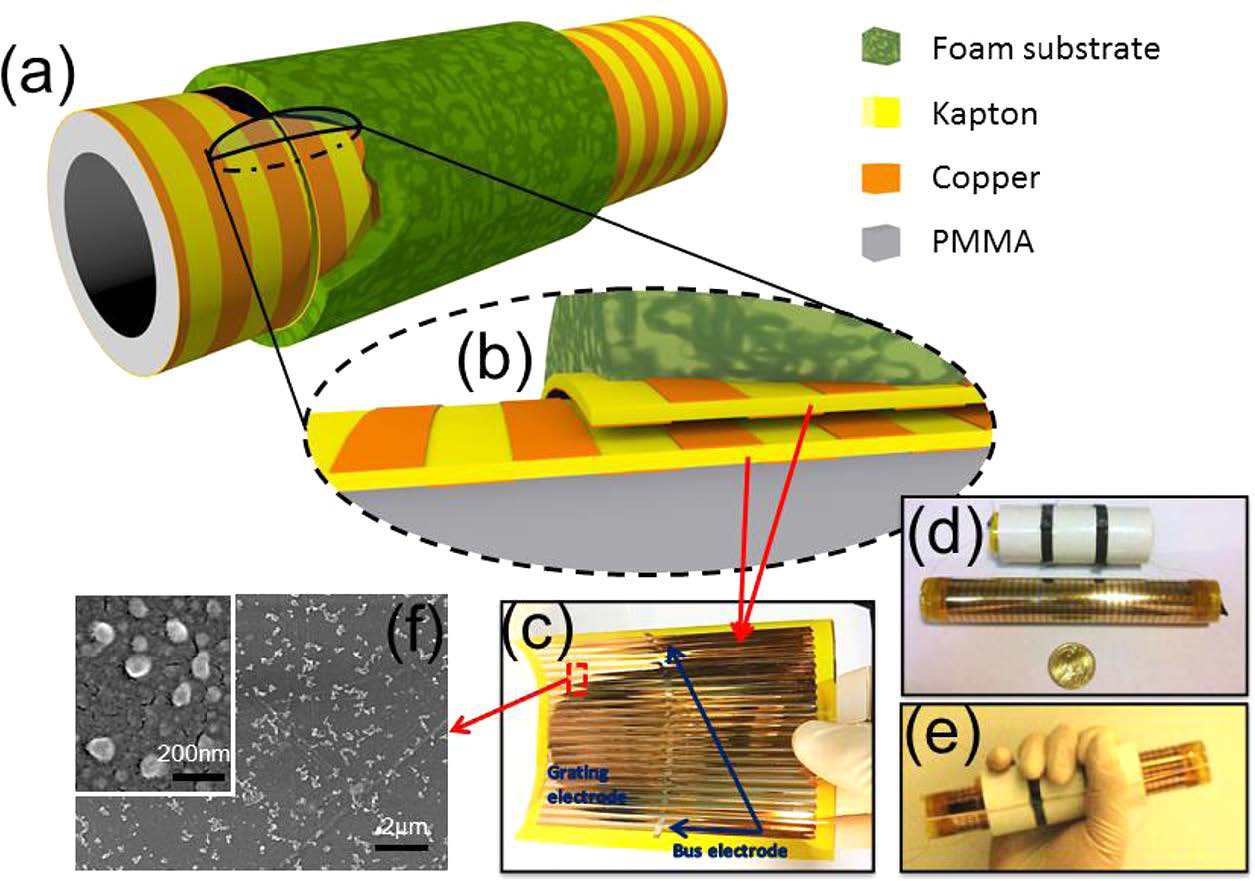
(a, b) Diagram of a triboelectric generator. (c-e) Polymer film ( kapton ) with copper contacts in assembled and disassembled state
This device looks slightly ahem-ahem ... erotic, but what to do, science requires sacrifice. If in the first article a polymer plate with a small copper section oscillated between two electrodes, now the electric charge accumulates when two polymer films move relative to each other, as shown in the figure:
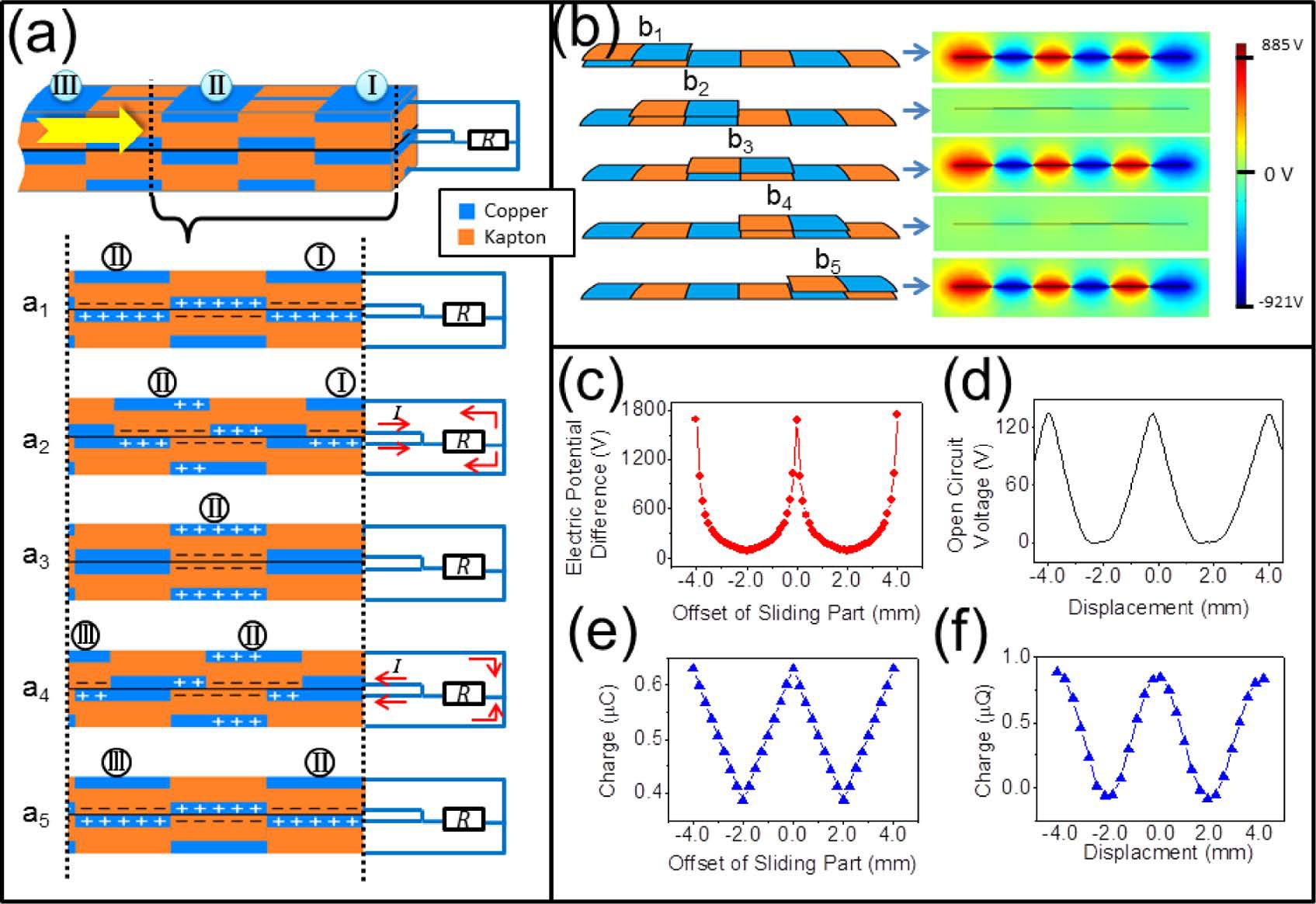
Principle of operation of the triboelectric generator (a), as well as simulation data for this system ( bf).
The authors also published a couple of videos (you can watch from the publisher's official website or from Yandex-Disk) how this tribogenerator can be activated from the movement of waves or a person.
And although the maximum output power is only 10-12 mW (1.36 W / m 2 ) at a current of about 300 μA and at a speed of 1 m / s for the device shown, this can potentially be used for navigation beacons, and also, to hell joking, wearing wearable smart clothes to fuel the built-in cardiometer or tracker, for example. We will talk more about this at the very end of the article.
Original article in ACSNano (DOI: 10.1021 / nn500694y).
The logical continuation of this work was the development of two models of an electric power generator using waves and raindrops.
In the first case, the rolling wave brings with it some charge, which is "absorbed" by the polymer film of fluorinated polyethylene propylene ( FEP ), as shown in the figure:
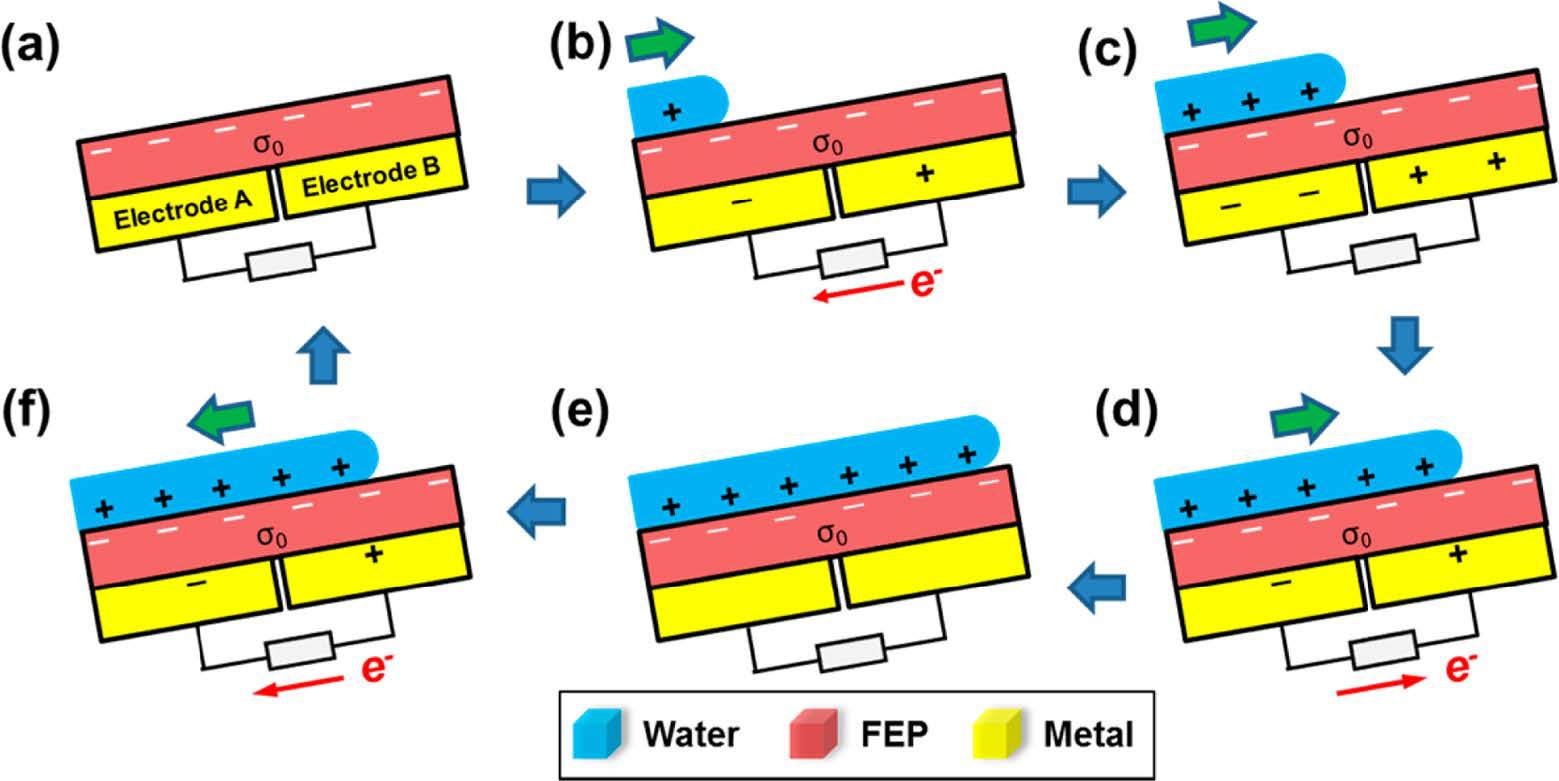
Scheme of operation of a triboelectric generator based on tidal waves
The power of such a generator is at the level of units W / m 2 , but with given that such an installation can be located along an unused coast, the prospects, in principle, are encouraging and attractive. In addition, rain or running water can also be used to generate electricity - video ( the publisher’s official website or from Yandex-Disk ).
Original article in ACSNano (DOI: 10.1021 / nn5012732).
In the second case, a more complex dual-circuit system was used, which allows you to convert not only electrostatic electricity from dropping droplets, but also to receive energy from the shock interaction of droplets with the surface.
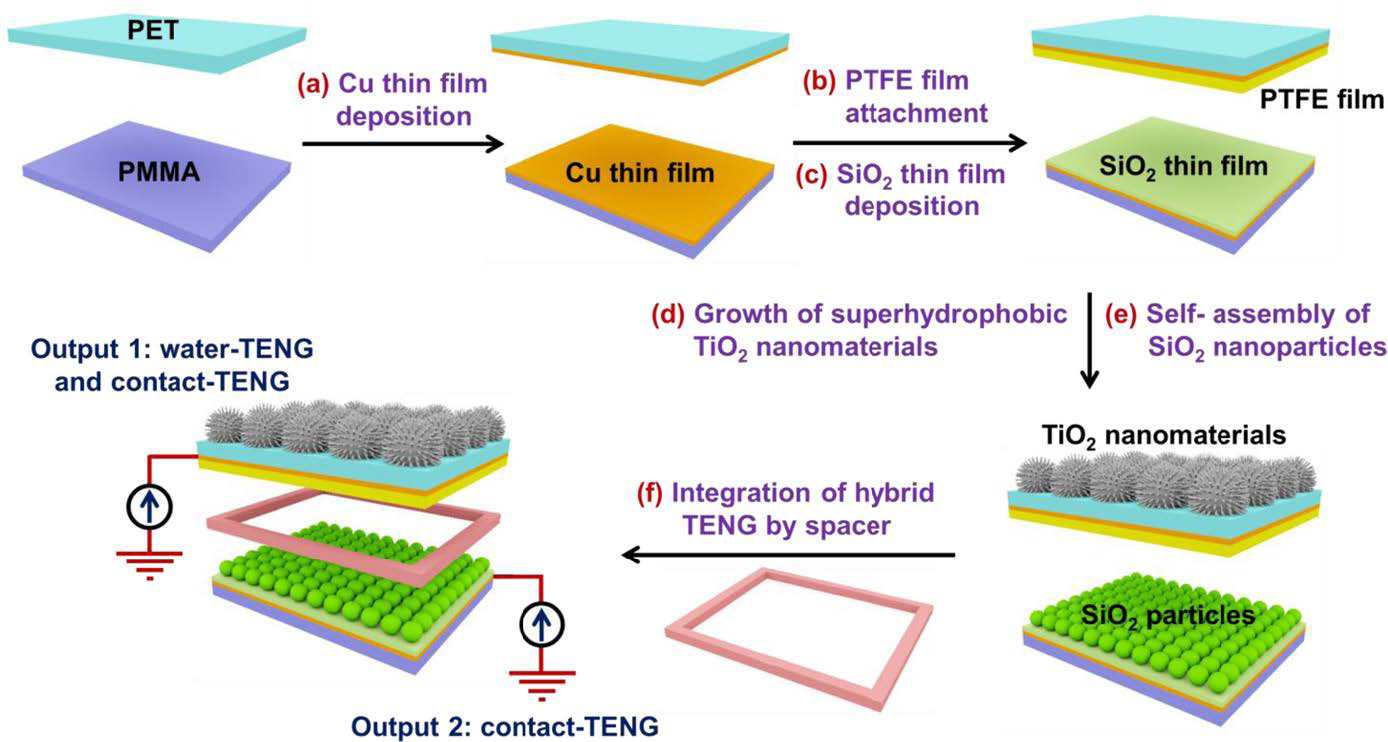
The general scheme of a dual-circuit triboelectric generator: the first circuit is titanium dioxide nanoparticles, which provide surface non-wettability and rain droplets, and the second circuit is silicon dioxide nanoparticles in contact with a Teflon film upon impact of an incident drop
A drop falling onto the inclined surface of such a generator carries with it a certain charge (for example, positive), and during the process of digging along the surface, it electrifies the polymer film (respectively, negatively), and the copper electrode only “collects” this excess negative charge. The second circuit, however, works on the principle described several times above: upon impact, silicon dioxide nanoparticles come into contact with a Teflon film, creating a potential difference and being electrified. The details of the operation of the two circuits separately in a schematic form are presented below:
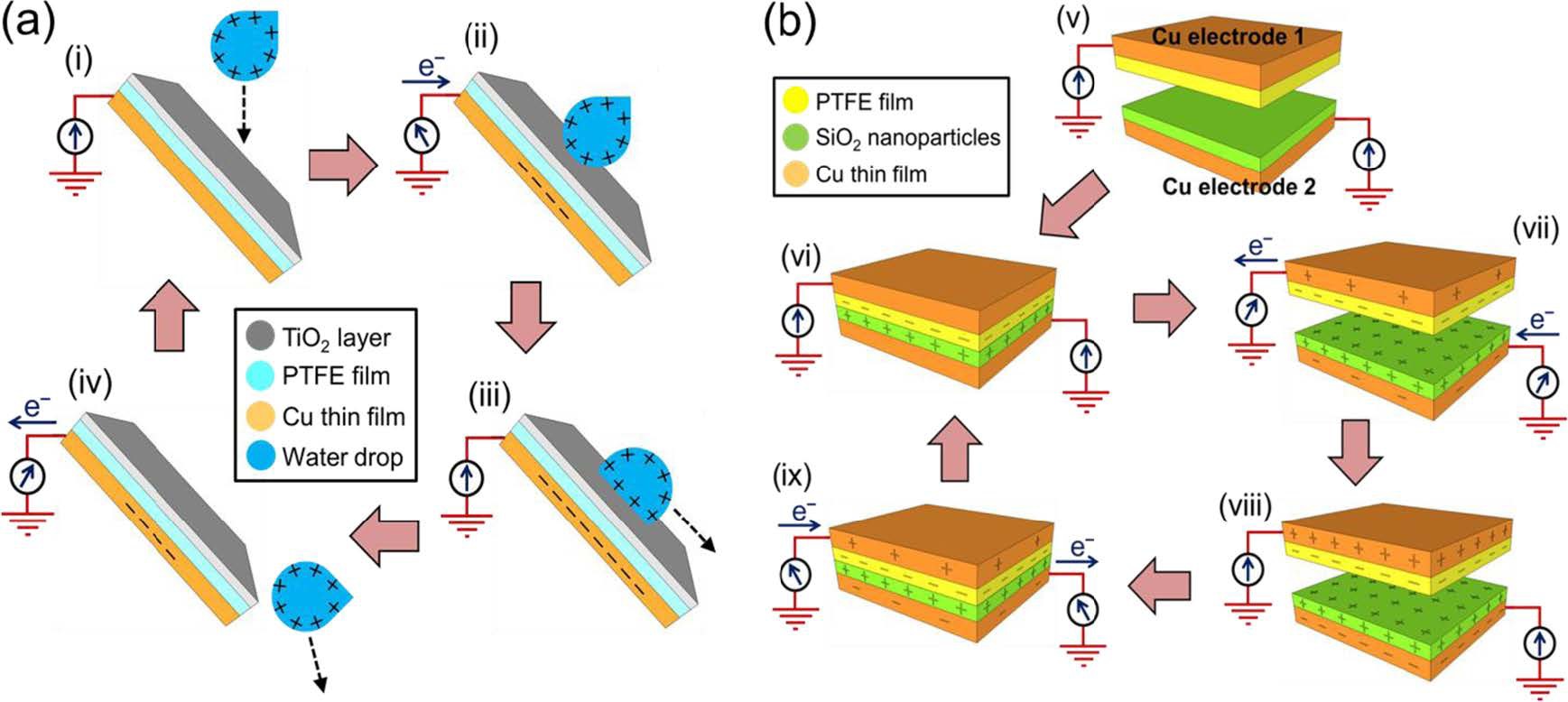
Ultimately, the first circuit gives a power of about 1.3 W / m 2 , while the circuit utilizing the mechanical energy of droplet droplets allows you to additionally get up to 0.3-0.4 W / m 2. Moreover, self-energizing sensors of various molecules can be created on the basis of such systems. In particular, the article gives an example with an ethanol sensor, which allows to determine the percentage fractions of a given compound. And in the conditions of large cities, these can be sensors of various gases to determine the ecological state of air.
A video demonstrating the operation of the device can be viewed on the publisher's official website or from Yandex-Disk .
Original article at ACSNano (DOI: 10.1021 / nn501983s).
Towards wearable charging systems
And the last couple of articles today, which I would like to talk about, is actually devoted to the prototype charging, which in a couple of years can be built into our everyday clothes for elements of smart clothes.
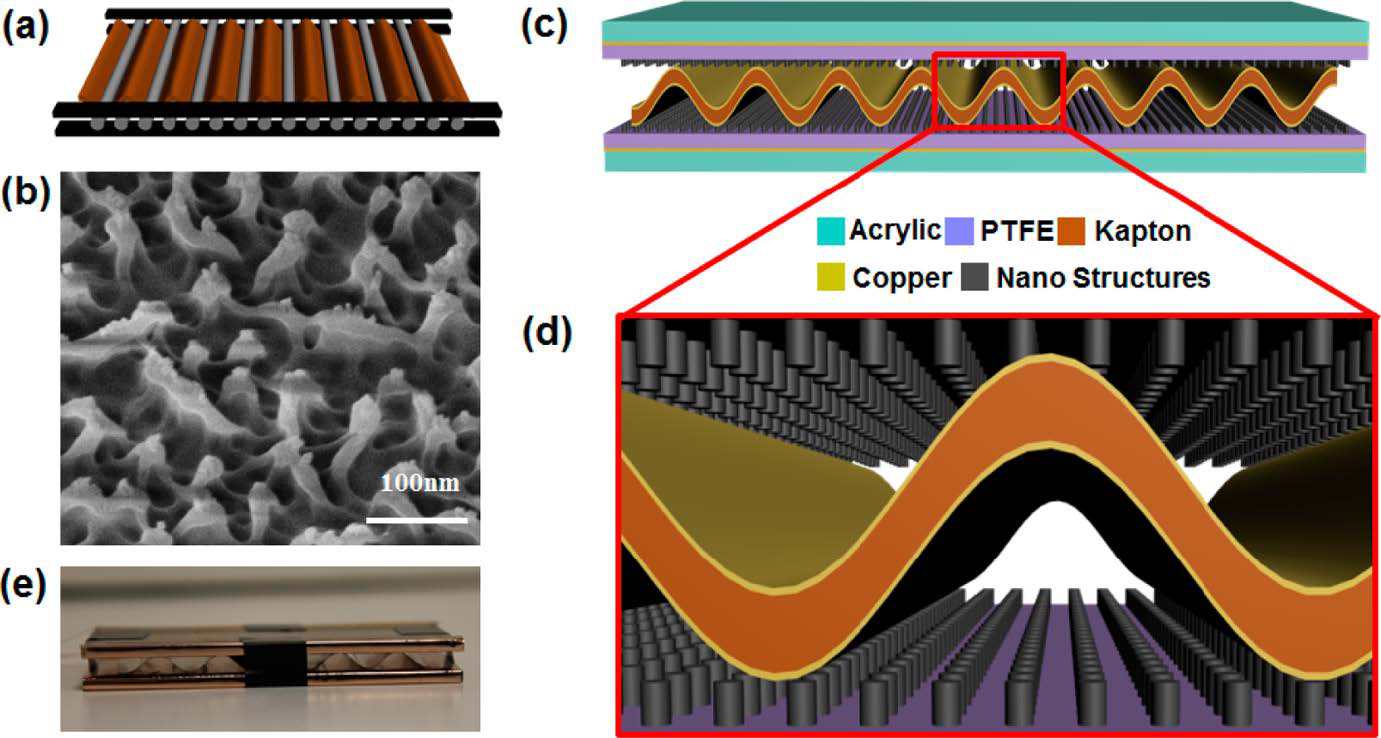
The concept of the concept for generating triboelectricity by compressing and stretching
The essence of this development is that when compressing or stretching, static or triboelectricity again occurs, which can be stored when walking or running and aimed, for example, to charge your smartphone lying in pocket. In principle, such systems can also be used to generate electricity from dropping drops or tidal waves, as demonstrated above. And although the generated power is not so great (~ 0.4 W / m 2), it was enough to power the LED array in the experiments (see video ).
The authors also published several videos demonstrating the operation of the device, which can be viewed on the publisher's official website or from Yandex-Disk .
Original article at ACSNano (DOI: 10.1021 / nn502618f).
However, the maximum power of the platform described above for generating triboelectricity is achieved at a reduction frequency of more than 100 Hz, which, you see, is more interesting for athletes, however, in the second work, scientists created fabric based on ordinary cotton threads, which allows you to generate electricity due to muscle contractions when walking, for example, or a simple pat.
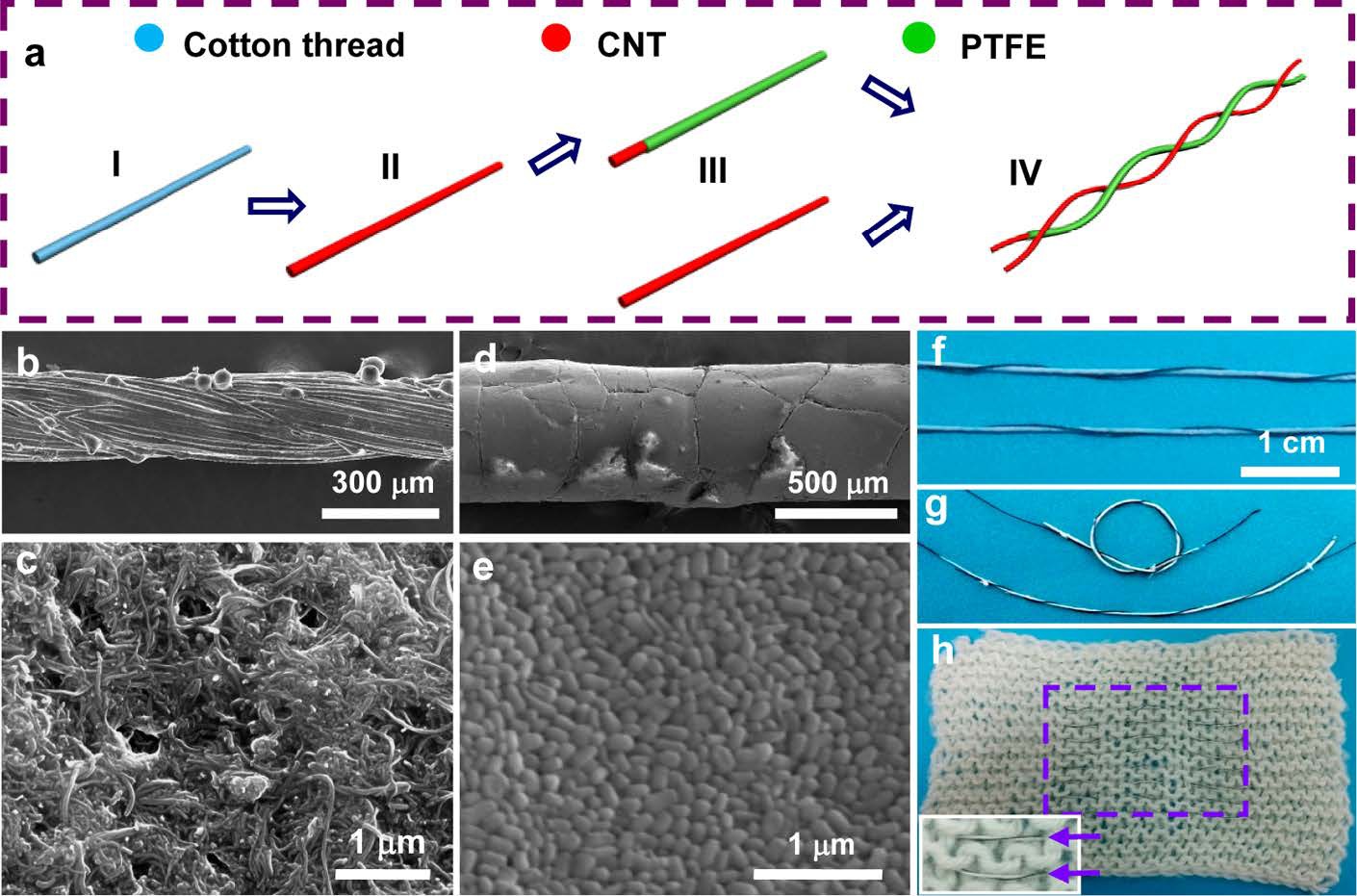
A new fabric that allows you to generate electricity: special fibers are woven into ordinary cotton.
In this case, the cotton fibers are first coated with carbon nanotubes, and then some of them additionally with Teflon. Further, pairs of such fibers are woven into ordinary fabric and can work as a triboelectricity generator due to the movement and friction of the fibers against each other.
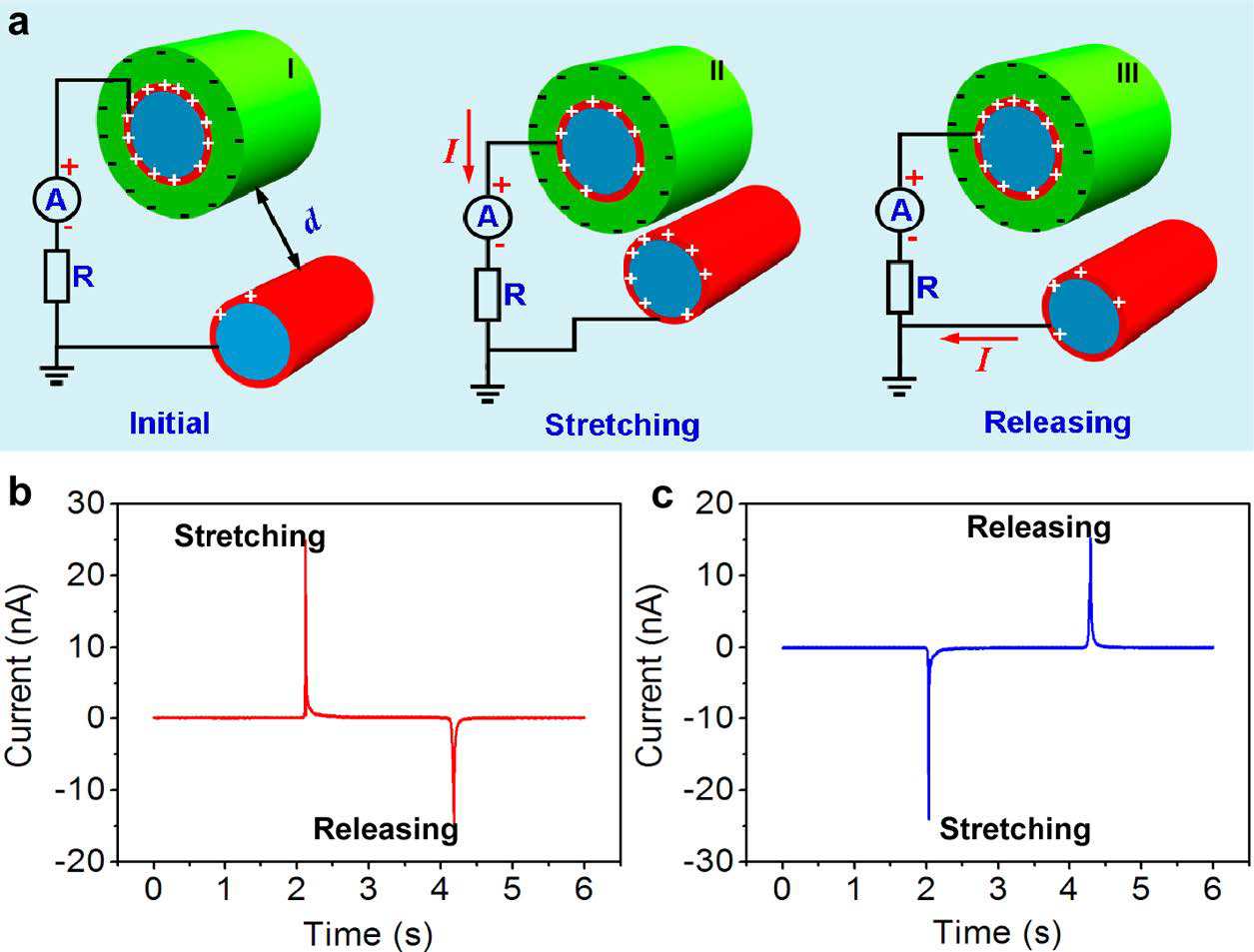
The electrical principle of the operation of two fibers to obtain triboelectricity
Once again, it is worth mentioning that the specific power of such devices is not as great as we would like, as well as the accumulated charge - only a few nC per half minute, however, this is enough to revive a monochrome display with a simple finger movement ( see video ).
Or, such a small amount of electricity may well be enough for some sensor built into clothes, for example, a thermometer, for activation of which it is enough to pat on the location of the tribogenerator.
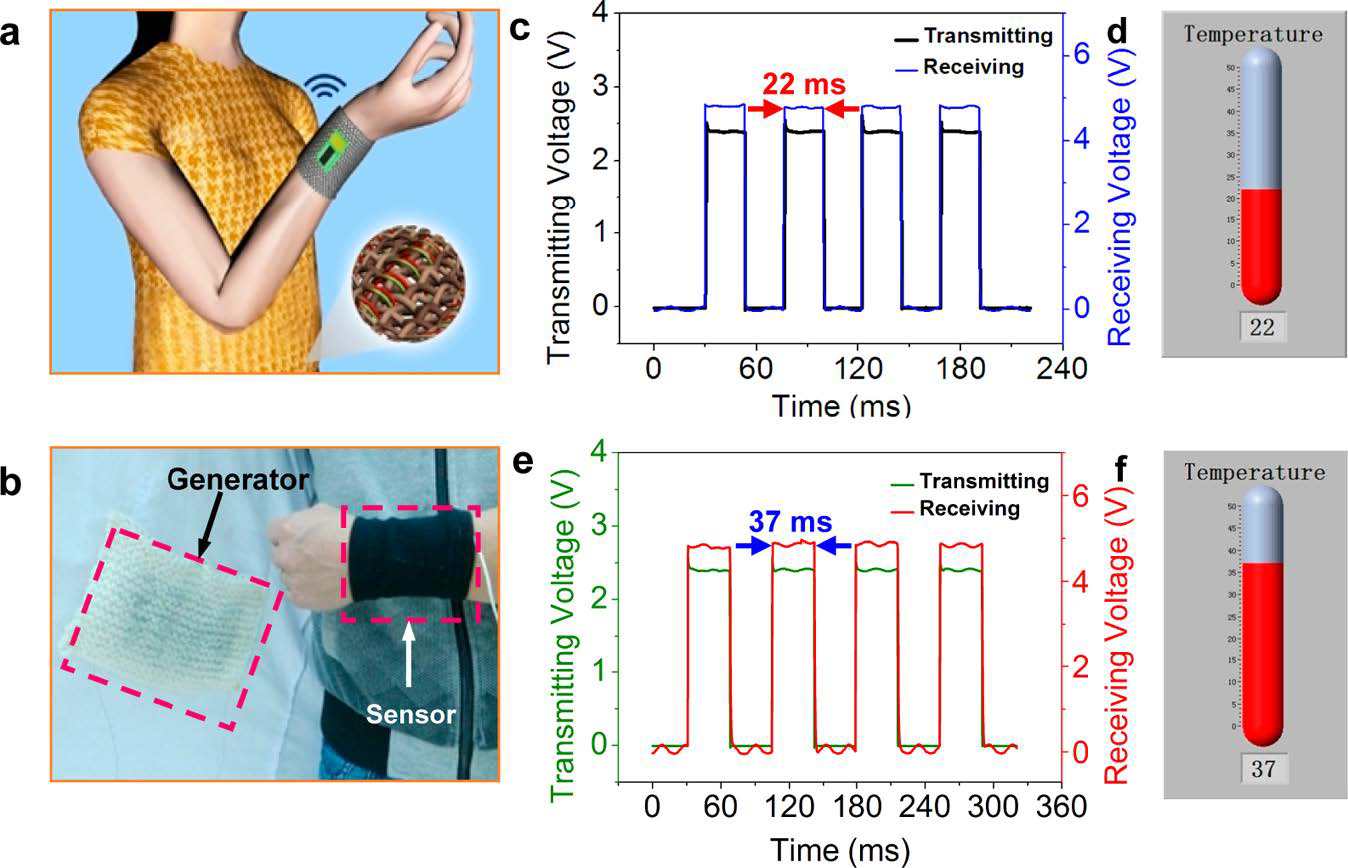
Wearable self-loading thermometer is another step towards wearable electronics.
Video with demos can be viewed on the publisher's official website or on Yandex-Disk .
Original article in ACSNano (DOI: 10.1021 / nn501732z)
Full list of published articles by This is Science on GeekTimes:
This is Science: Simple and Cheap Solar Energy
This is Science: Graphene - Life or Death?
This is Science: Blow and Get Electricity
This is Science: Silicon Electronics: Bend Me All the Way!
This is Science: An elastic display on quantum dots.
This is Science: Putting triboelectricity at the service of humanity.
This is Science: 3D optical printing moves to the micro level.
This is Science: What's inside a neuromorphic chip?
This is Science: News from graphene fields.
This is Science: 3D electronic lithography to the masses.
This is Science: Alkaline battery discharge or why the battery bounces.
This is Science: micro-guns and nanocores.
This is Science: wearable electronics and triboelectricity. Part 1
This is Science: Wearable Electronics and Triboelectricity. Part 2
Sometimes it is possible to read briefly, and sometimes not so much about the news of science and technology on my Telegram channel - we are welcome;)
Only registered users can participate in the survey. Please come in.
Will find development data their application?
- 24.2% Yes, in electricity conversion 62
- 48.8% Yes, in energy-independent, compact systems 125
- 38.2% Yes, in wearable electronics for charging devices 98
- 63.6% Yes, in wearable electronics to power sensors 163
- 7.4% No, they will not. Completely unpromising venture 19
- 14% Difficult to answer. 36
